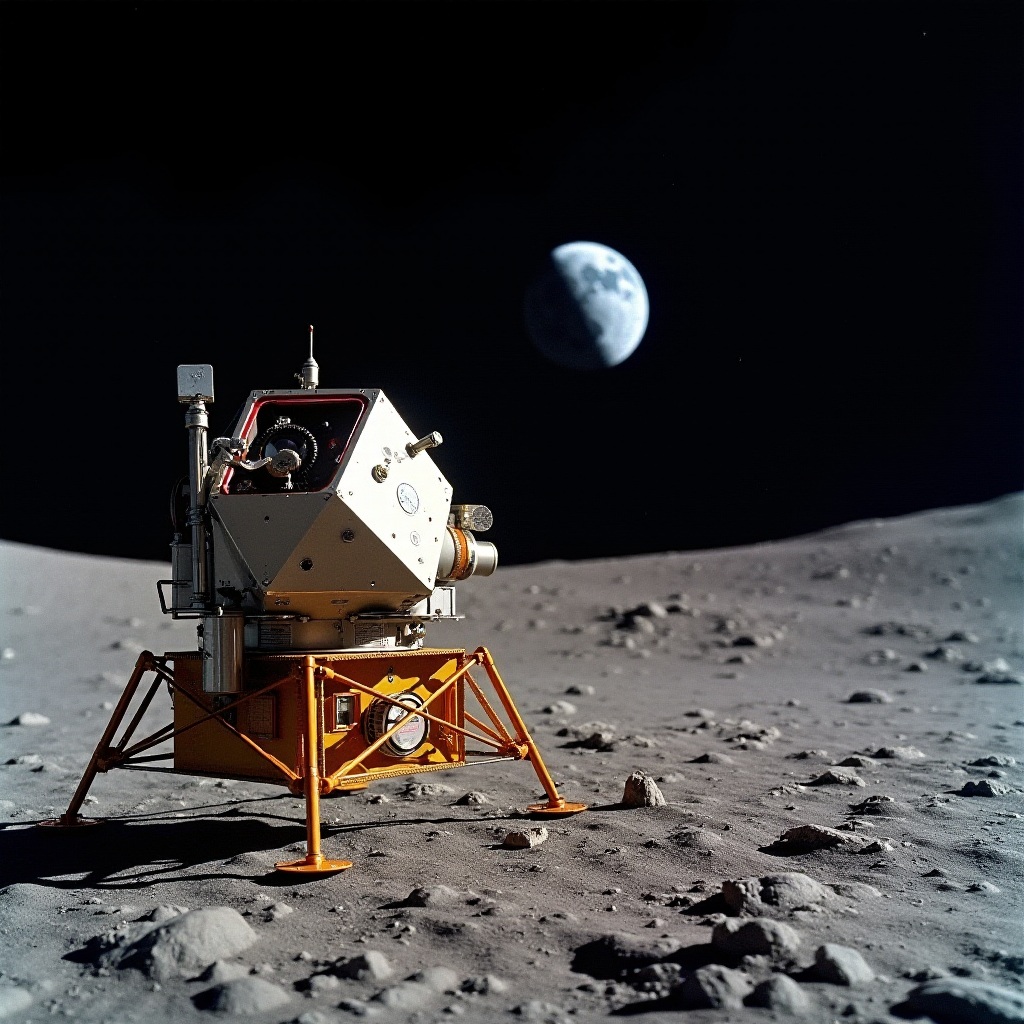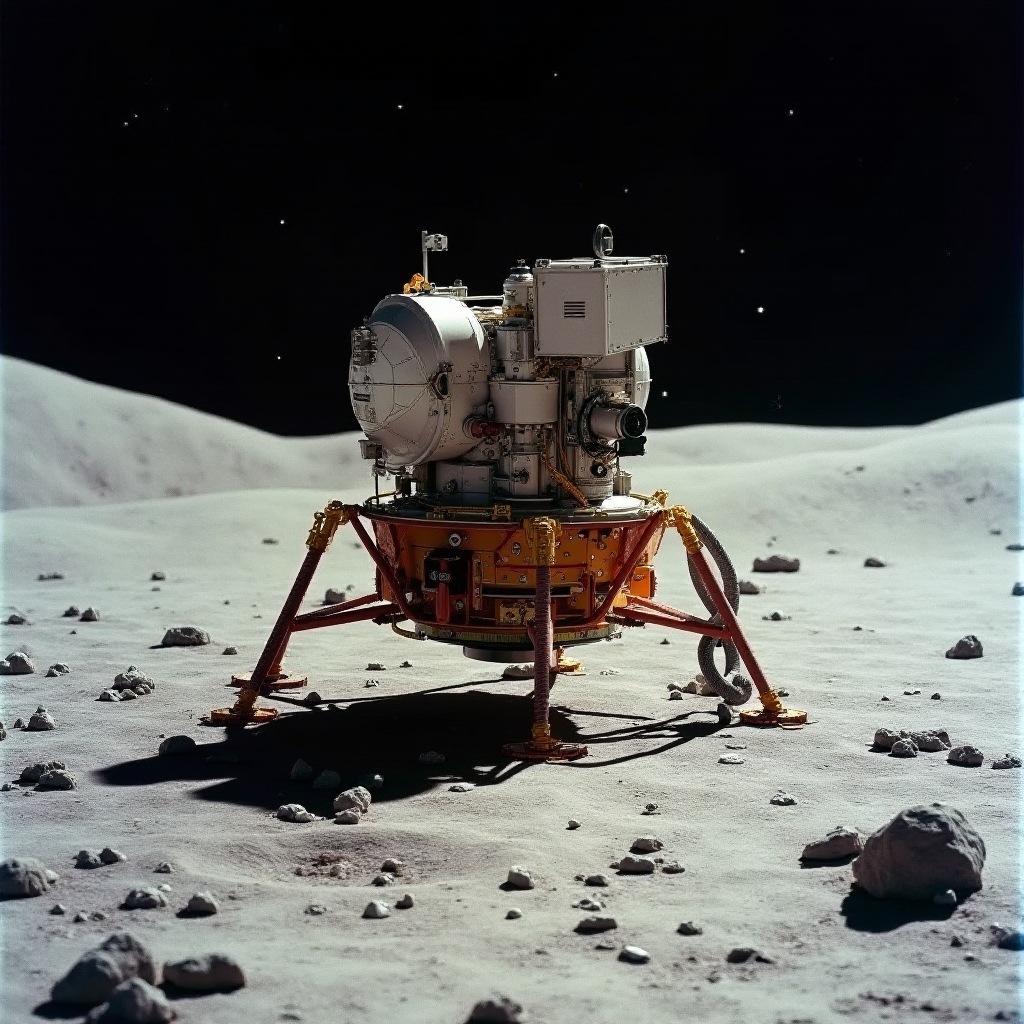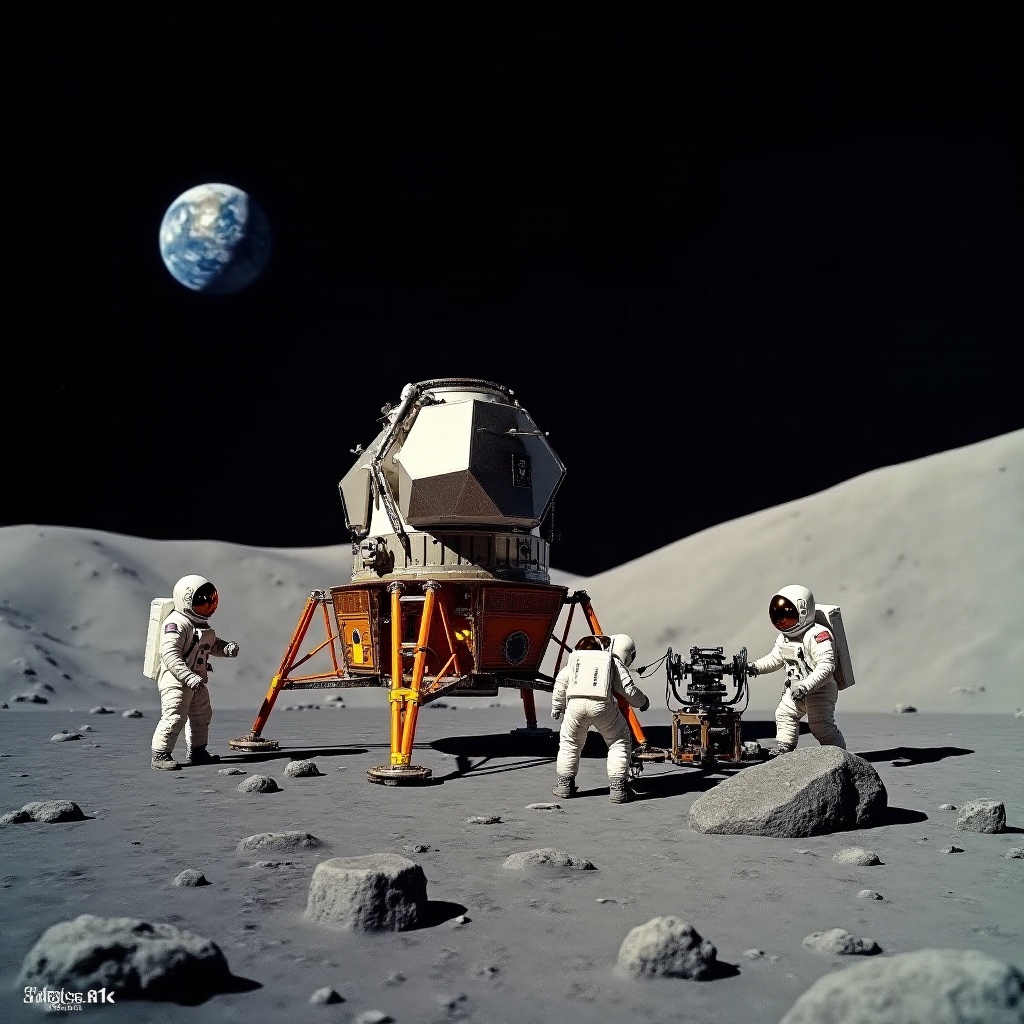Introduction
When thinking about humanity’s first steps on the moon, Neil Armstrong’s iconic photograph often comes to mind. However, few realize the pioneering efforts that placed cameras on the lunar surface even before the famous Apollo 11 mission. The journey to capturing images on the moon involved an intricate blend of advanced technology, daring missions, and the visionaries at NASA. So, how did the camera get on the moon before Armstrong? Let’s explore this fascinating tale.

The Role of Cameras in Early Space Exploration
From the outset of space exploration, capturing images from beyond Earth’s atmosphere was crucial. These images not only provided scientific data but also offered the public a glimpse into the cosmos, fueling further interest in space missions. Cameras became indispensable for documenting celestial events, lunar landscapes, and spacecraft activities. These early images played a significant role in understanding space environments and planning subsequent missions.
Before reaching the moon, cameras were already fixtures on smaller missions. They documented the Earth’s atmosphere, served as tools for observation in zero gravity, and helped calibrate scientific instruments. As technology advanced, the hunger for clear and precise lunar imagery grew, setting the stage for the next level of space photography.

NASA’s Vision for Documenting Lunar Exploration
NASA recognized the importance of visual documentation in its aim to explore the moon. Detailed images were needed not just for scientific study but also for public engagement and historical records. The agency’s goal was ambitious – to have high-resolution images of the lunar surface before sending astronauts.
To achieve this, NASA designed specific missions dedicated to lunar photography. These missions were not merely about taking pictures; they were about understanding the moon’s topography, identifying potential landing sites, and testing the technology needed for future manned missions. Hence, the focus was not just on the act of capturing images but on what those images represented for future explorations.
Surveyor and Ranger Missions: Pioneers of Lunar Photography
Before Neil Armstrong’s historic moonwalk, the Surveyor and Ranger missions laid the groundwork for lunar photography.
Surveyor Missions
The Surveyor program was pivotal in sending unmanned spacecraft to the moon, beginning in the 1960s. Surveyor 1, the first successful mission in June 1966, transmitted over 10,000 images back to Earth. These images were crucial for studying the moon’s surface and potential landscapes for future manned landings. Equipped with television cameras, the Surveyor missions provided invaluable data about the lunar soil, surface conditions, and more. These early photographs were indispensable in influencing the design and safety protocols for subsequent Apollo missions.
Ranger Missions
Preceding the Surveyors, the Ranger missions (1959-1965) aimed at capturing close-up images of the lunar surface by crashing camera-equipped probes into the moon. Ranger 7, the first successful mission in 1964, sent back over 4,300 high-resolution images before impact. These missions provided unprecedented insight into the moon’s craters and surface features, setting a new benchmark in space imaging. Ranger’s success marked a significant leap in lunar exploration, confirming that precise, high-quality images could be sent from distances beyond Earth.
The Technical Advancements in Space Camera Technology
For capturing stunning images of the moon, NASA took significant strides in camera technology.
Choosing the Hasselblad Camera
NASA selected the Hasselblad 500 EL camera for its medium format, durability, and superior image quality. The Swedish-made camera had already proven its reliability in earlier space missions, making it a prime choice for lunar tasks. Its ability to withstand the rigors of space travel while delivering high-resolution images made it indispensable for lunar exploration. Astronauts were trained extensively on their use, ensuring that every shot would be perfect under the constraints of lunar gravity.
Modifications for Lunar Conditions
Adapting the Hasselblad camera for lunar conditions involved several modifications. These cameras had to operate in extreme temperatures, function perfectly in a vacuum, and withstand the vibrations of launch and landing. Modifications included the removal of unnecessary features to reduce weight, the addition of highly reliable lenses, and the application of special coatings to protect against radiation. These modifications ensured the cameras could perform flawlessly and capture some of the most iconic images of the 20th century.
The Journey to the Moon: From Earth to Lunar Surface
The journey of cameras from Earth to the moon was as challenging as it was groundbreaking. The equipment had to endure immense gravitational forces during launch, survive the harsh environment of space, and land safely on the lunar surface. The success of the Ranger and Surveyor missions provided critical lessons in this regard. These missions validated the capabilities of space camera technology and helped refine techniques for subsequent Apollo missions.
Once on the lunar surface, the cameras documented everything from the texture of the soil to panoramic vistas, offering a treasure trove of information to scientists back on Earth. This meticulous documentation was not just about creating memories; it laid the groundwork for future exploration and inspired generations to come.

Conclusion
The story of how cameras reached the moon before Neil Armstrong is a testament to human ingenuity and technological progress. Through the efforts of the Ranger and Surveyor missions, humanity gained invaluable insights into the lunar surface, paving the way for manned missions. The strategic vision of NASA and the technological advancements in camera technology played pivotal roles in this achievement. These early images not only aided in scientific exploration but also captured the imaginations of people worldwide, showing what was possible when ambition met innovation.
Frequently Asked Questions
Why was the Hasselblad camera specifically chosen for lunar missions?
The Hasselblad camera was chosen for its reliability, image quality, and ability to be adapted for the harsh conditions of space.
What were the primary objectives of the Ranger and Surveyor missions?
The Ranger missions focused on capturing close-up images of the lunar surface by impacting the moon, while the Surveyor missions aimed to land softly and study the surface, sending detailed images back to Earth.
How did lunar camera technology influence future space missions?
The advancements in lunar camera technology set the precedents for future space missions, proving the importance of documenting extraterrestrial environments and inspiring innovations in imaging technology.

